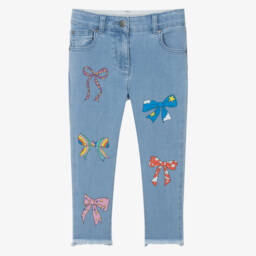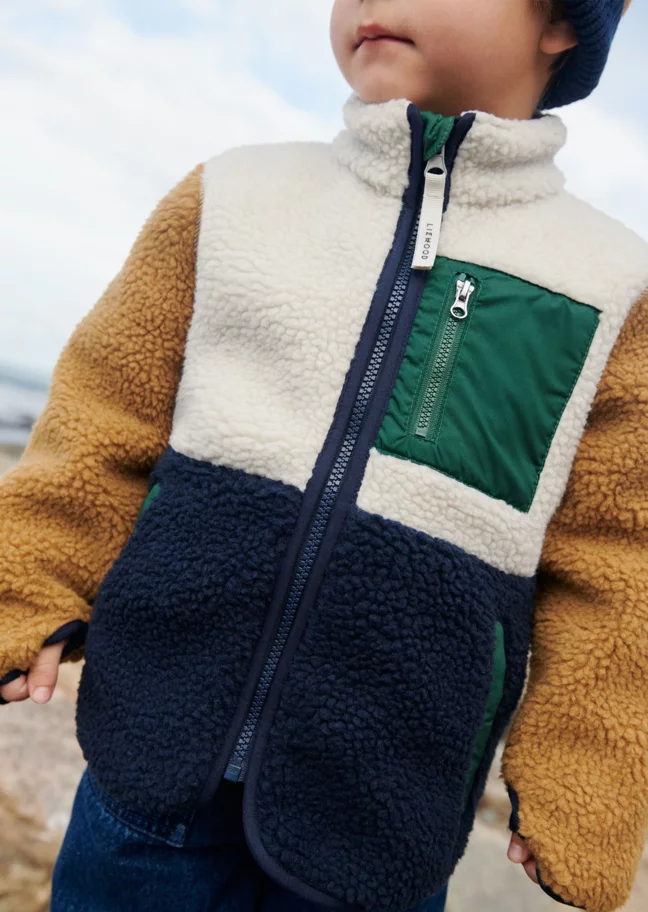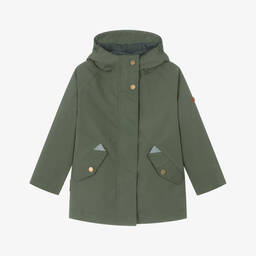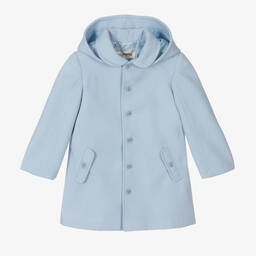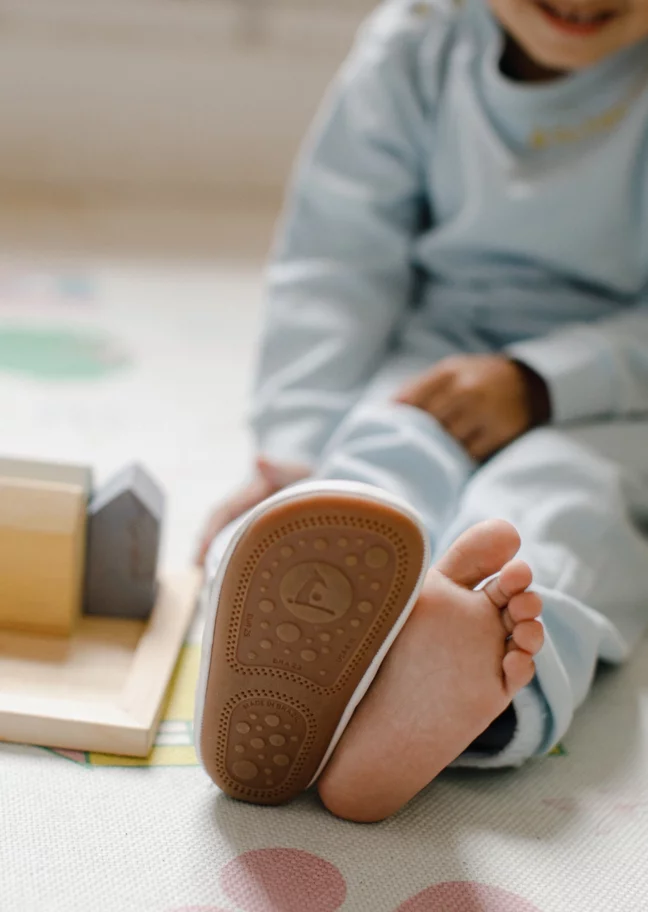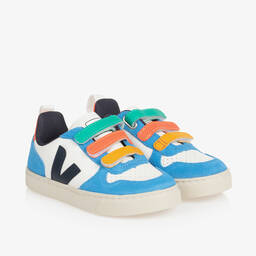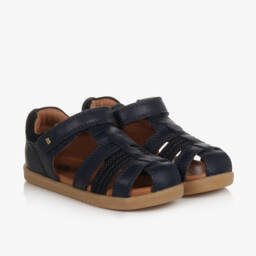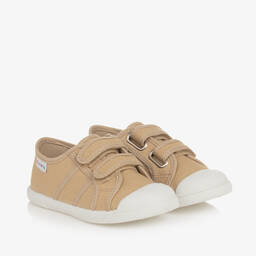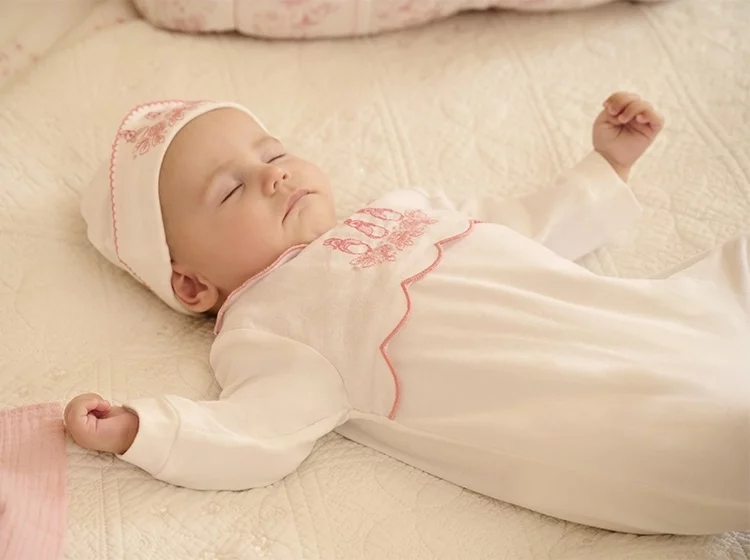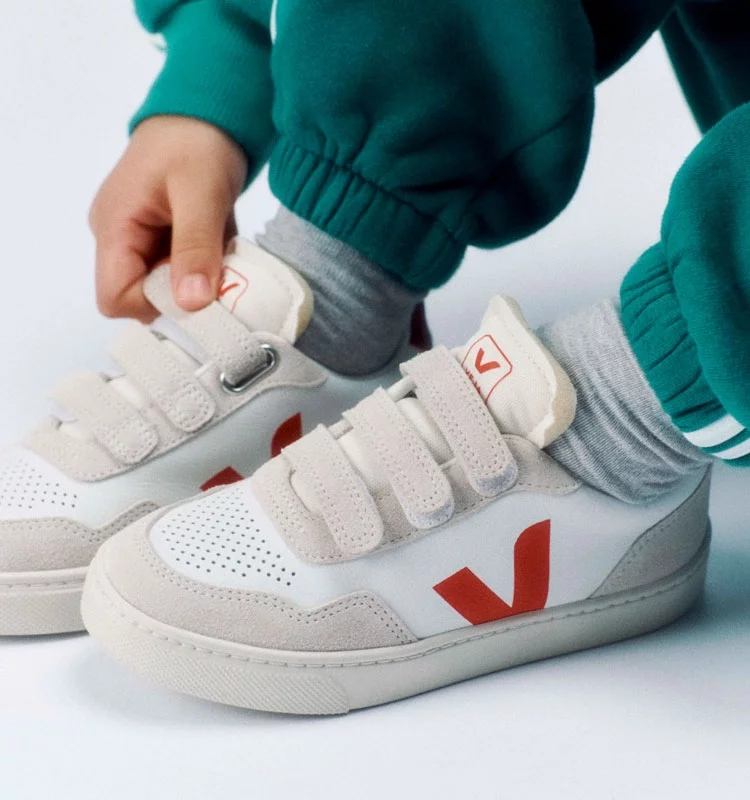
Childrensalon's Guide to . . .
Helping Kids to Dress Themselves
As your child welcomes the toddler and preschool years, they’ll be eager to do more things on their own, like dressing themselves. You'll notice moments of frustration as they try to navigate buttons and zips, but as they begin to problem solve it will start to become easier for everyone involved — just in time for their first day of school.
To help, some of our own Childrensalon families are here to share their experiences, along with tips and tricks on how to make dressing for the day simple (and fun!) for kids, including parent-approved techniques like backward chaining. Plus, our designers are on hand with lots of functional features that will reinforce the learning process — hooray for elasticated laces.
Tops and Bottoms
Getting dressed is the perfect opportunity for word association. Point out colours, shapes and textures to make choosing an outfit fun.
Involve them in outfit choices
When it comes to choosing their clothing for the day, there are lots of tried-and-tested methods for making it more enjoyable for everyone involved. Giving your child the autonomy to choose some elements of their outfit is a great idea and it’ll feel less like a chore, something that our senior creative editor Rachael and her daughter, Ruby, know all too well. “We usually select different outfits and then I lay them out for her," says Rachael. "Ruby gets excited and loves having the opportunity to choose — toddlers like to be in control! She usually asks me 'what are we doing today?' and that will help her decision, although really it’s me who’s secretly made sure each option is suitable for the day’s activities. Don’t tell Ruby I told you that!”
ㅤ
"Ruby loves having the opportunity to choose her outfit — toddlers like to be in control!"
Rachael, Senior Creative Editor
Top Tips
Working out where to put their arms and head in a sweatshirt or how to wriggle into a pair of trousers can be tricky, so using their bed or sitting on the floor is a great tip for helping with balance and the coordination of wayward limbs. Look out for handy features like drawstring ties and elasticated waistbands, and opt for stretchy cotton jersey to give them a bit more room for movement. Skirts tend to be a little easier, as they can just twist it around to the right place once it's on — this is the perfect opportunity to encourage kids to look in the mirror and correct it themselves. When putting on their outfit, choosing garments with prints on the front and nothing on the back will also help your child work out which way round it’s meant to go.
Coats and Jackets
There are lots of creative ways to put on a jacket, so try out a few and see which technique your child takes a shine to.
Let them try to work things out first
We all know that thicker, padded coats can be more difficult to manoeuvre, so why not start off with a lighter jacket, such as a raincoat or fleece? “They’re easy to fling on,” says Childrensalon’s senior merchandiser, Myles, Dad to snappy little dressers Marcel and Ava. “Marcel had a habit of pulling his sleeve all the way through when taking off his coat,” Myles recalls, “it would be inside out, and then he’d struggle to put his coat back on again. Teaching them to correct their coat as soon as it’s off is a bonus, so it’s prepared and ready to wear when they need it." He also remembers that not being too fussy with the kids' dressing habits played a huge part. "Letting them learn for themselves and problem solve once they’d got the basic steps in place was key. It prepares them for the times you won't be on hand to support: settling into morning class, preparing for lunchtimes in the playground or getting ready for home time."
ㅤ
"Letting them learn for themselves and problem solve is key. It prepares them for the times you won't be on hand to support."
Myles, Childrensalon Senior Merchandiser
Top Tips
Experts say that teaching kids to take off their jacket first — also known as backwards chaining — is the best place to start. This technique not only breaks down the task into smaller movements, but as they grow in confidence and ability they can take ownership of each stage until they complete the whole process back to front, front to back and every which way. Choose coats with zipper fastenings, as the up-down motion is easier for little ones to do themselves, and look out for additional pull tabs to give them something extra to grab. Once that's mastered, try moving on to buttons. These are a little more fiddly as they require both hands to work together simultaneously, so you could try popping the item on a table first to practise.
Shoes and Socks
Shoes are one of the first things kids will learn to take on and off. And, yes, kicking them off does count . . . kind of!
Practise at every opportunity
Many children will naturally take their time learning how to tie laces (it is an art, after all) as our own content editor Eleonore knows. “My son can finally tie his own shoe laces, but it's been quite tricky getting there. He was quite determined to learn, so we practised whenever we had a quiet moment, on the train or sitting in the dentist's waiting room and we finally got there!" Whilst they’re on their way to mastering lace tying, there’s no harm in getting to grips with our other easy-fasten options first. “It still takes quite a long time for a shoe change,” says Eleonore, “so we do rely heavily on shoes with elasticated laces and Velcro, especially for school.”
ㅤ
"We practised tying laces whenever we had a quiet moment, on the train or sitting in the dentist's waiting room."
Eleonore, Childrensalon Content Editor
Top Tips
Putting on their own socks and shoes is a big milestone for any child. And the process comes with its own set of rules to master. Teaching them starts with understanding which shoe goes on which foot; if they’re a bit too young to know their left from their right, there are lots of visual cues that can help with the process. Pointing out the way the shoes fasten — for example, styles that undo from the outside in or choosing designs that have a distinctive pattern on one side — helps towards creating familiarity and a sense of routine. When it comes to putting them on, have them sit down on a chair or the bottom step of the stairs and guide their feet into the socks and then the shoes. By watching and feeling you do this, they’ll start to understand how much pressure to use to wiggle their foot in. Once their feet are firmly in place, we have plenty of fastening options to help them complete the final step. Some children may never move on to laces, but the good news is that there’s always Velcro.
ㅤ
Images by VEJA, Frugi, Liewood and Tip Toey Joey




